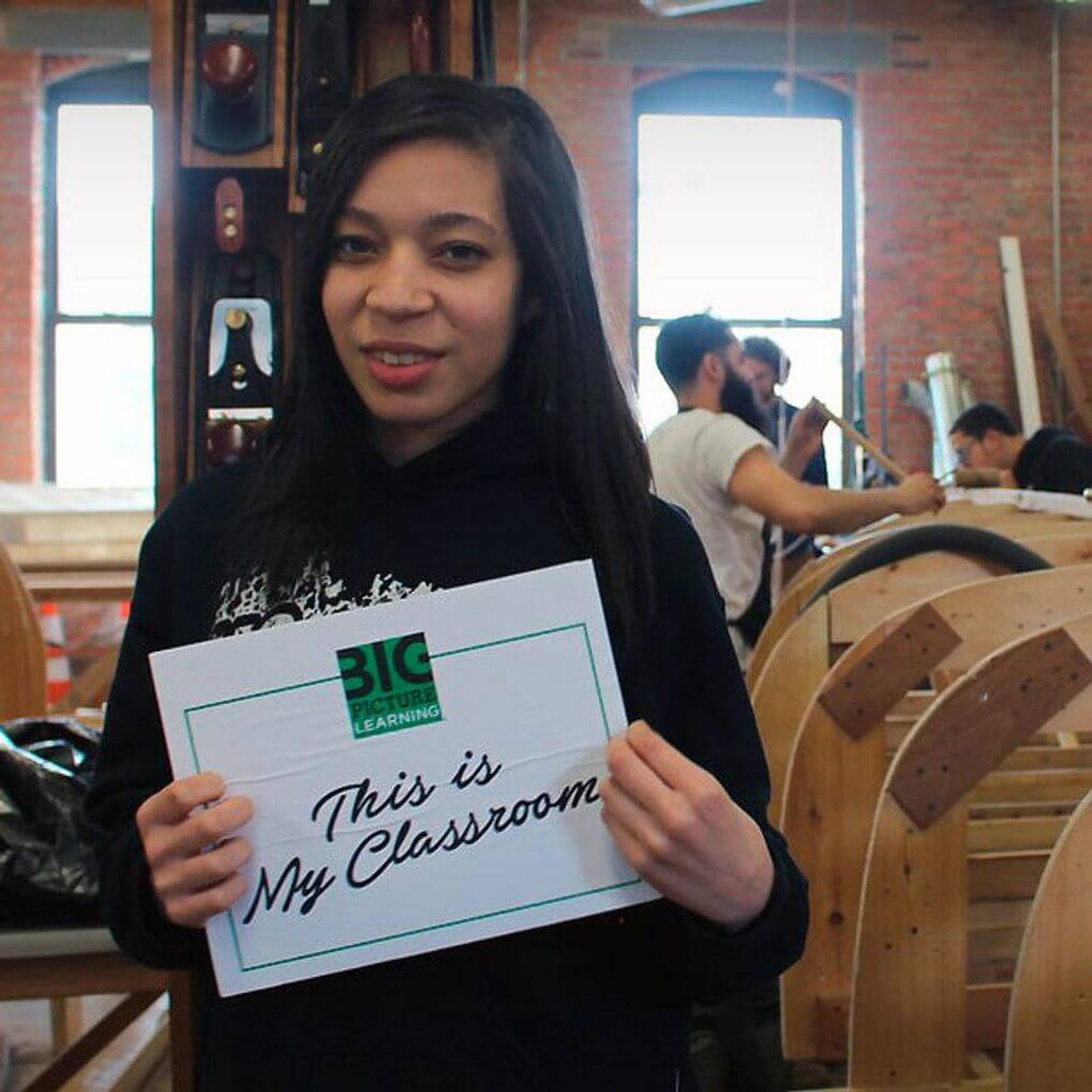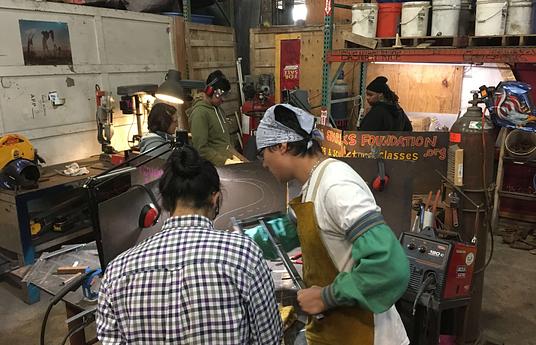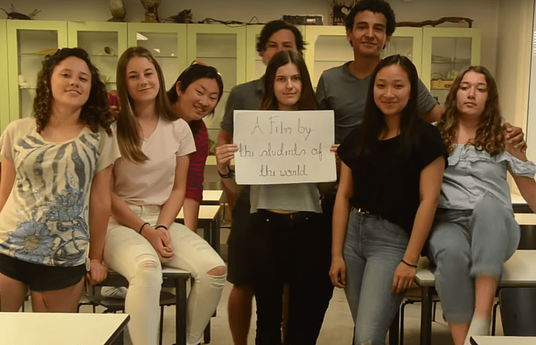Teacher-centered approaches defined education for a long time. In many ways it made perfect sense; it’s the most straightforward way to run a school. But a different time, a changing society, calls for a shift in the system.
Now that we understand more about the way people learn, it’s a given that in a room of thirty or so students, not everyone can be expected to learn the same things, in the same way, at the same pace. Top-down, one-size-fits-all approaches to education are giving way to more individualized student-centered approaches that enable young people to gain the knowledge and skills they need to thrive as learners, as well as effective workers and engaged citizens.
What sets student-centered learning apart? Student-centered learning approaches follow four key principles: Students take ownership over their learning, it’s personalized, competency-based, and not restricted to a set place or time.
This means that in typical student-centered learning environments, young people progress when they can demonstrate mastery of a topic, not at the end of an arbitrary number of sessions. Learning isn’t restricted to the four walls of the classroom or the hours within the school day and students’ interests and skills will actively be incorporated into the learning process, hopefully paving the way to academic success and a lifelong love of learning.
The trouble is, students may not even know what their interests are. In all likelihood, few people in their school career have ever asked them and they’ve been too busy cramming for tests to give it much thought. So when it comes to student-centered learning, how do you get students to think about their own interests?
Getting Parents On Board
Our recent report 'Every Child To Flourish', took into account the opinions of a variety of stakeholders in education. The stakeholders identified a great breadth of areas in education as needing improvement, and many raised the importance of increasing community partnerships and family involvement in school.
Whatsmore, parents spoke about themselves as stakeholders in education far more than other stakeholders, which could show parents feel left out of discussions and are questioning how they can adopt a more influential role in their children’s education. These feelings are reflected in a 2017 survey carried out by Parentkind in the UK, which found that 81% of parents would like to be consulted by their child’s school. Are parents voices heard enough when we talk about education change?
Babita Devi, a HundrED Academy member and the Founder of MySircles, echoes these concerns. “Currently there is no clear way to communicate education change in a consistent manner to parents and for parents to be actively involved in this change,” she argues.
“As parents, we teach our children individuality, however, the school system is very much about conformity and parameters”, Devi explains. “Schools are under certain pressures and these are not always aligned with what the parents believe to be key learning outcomes.”
Elliot Washor, co-founder of Big Picture Learning, agrees that it’s vital to get parents on board. In a webinar entitled ‘Meeting Student Expectations’, Washor shares how instrumental parents can be in getting to the heart of a student's passions and interests. Washor suggests starting off by asking students what they’re interested in. “Ask them what they were interested in when they were three years old,” he urges, “ask their parents what they thought their children were interested in.”
“There’s research out there that says by the time a child is three years old they’ve already identified interests and who they want to learn from around those interests, it’s a biological part of who we are and it’s very easy to tap into that, but the crazy part is there’s no time in school to ask those questions unless you make the time.”
How Can Schools Engage Parents In The Process?
So how can parents and schools work together to ensure that young people can pursue learning in the ways that suit them best? Schools like Big Picture Learning understand that placing students at the center of learning doesn’t mean excluding all other stakeholders, but actively inviting them in. These schools place much importance on involving parents and the community, recognizing that supportive and nurturing relationships are key to student success.
In fact, these elements comprise two of the ten Big Picture Learning Distinguishers: Learning Through Internships & Interests (LTIs) which often happens in the wider community, and Parent and Family Engagement. “Parents are welcome and valued members of the school community and play a proactive role in their children’s learning, collaborating in the planning and assessment of student work,” explains Washor. “They use their assets to support the work of the school, and often play an integral role in building relationships with potential LTI mentors.” Student-centered approaches like LTIs can be more demanding in terms of time and energy, so it makes sense to harness the skills and determination of parental figures to ensure that the learners' interests come first.
Big Picture Learning has even created tools to help students, parents and educators everywhere to determine whether their school is truly an engaging, student-centered learning environment, one which asks the essential question: “Have we considered students’ own expectations of us?”.
Called ‘The 10 Expectations’, the tools include videos, rubrics and a book, which lay the path toward a more student-centered approach to learning, a path that is open to both resource-rich and underserved communities.
Amongst the resources accessible via the 10 Expectations portal is a video for parents, available in Spanish and English, which provides support for parents who want to speak to their child’s teachers about their experience beyond assessments and grades. Simply asking questions like “Do you know my child and her interests and talents?”, or “Do you provide my child with opportunities to contribute to solving the problems his community and the world is facing?” can start a journey towards a more engaging, student-centered learning experience, and a fruitful relationship between parents and teachers.
How Can Parents Support Student-Centered Learning?
Parents often follow their child’s development, interests, and skills closely, encouraging them to pursue their passions and dreams, positioning them to play an instrumental role in student-centered learning.
Babita Devi explains that when a child begins their education, it’s crucial for the school to take on this role, too. “The education system was created to churn out certain types of workers and has not moved with the times. A culture of innovation and creativity is needed, this can start at home but needs to be followed through at school and for the less privileged children, there is an even bigger reliance on the school system.”
Could student-centered learning help these less privileged children to meet their potential? A study by the Nellie Mae Education Foundation suggests that student-centered practices foster student engagement and facilitate learning that is relevant to students. While some educators found that this approach took more time, they asserted that such practices foster the development of important skills and knowledge. A 2014 Stanford study found that student-centered learning can be particularly beneficial for traditionally underserved students.
But where do parents fit into this? Our global youth survey revealed that only 26% of students want their parents and family to be more involved in their education. It shouldn’t surprise anyone that teens don’t want their parents in school! But parental involvement can be subtle but powerful, cheering on the efforts of their children and forming behind the scenes working relationships with teachers. Devi’s awareness of the importance of parental involvement led her to create MySircles, an app that connects parents in a secure, private network so they can communicate easily and effectively with one another about school-related issues.
Elliot Washor agrees that parents and schools have a shared responsibility to make learning a success. Citing Benjamin Bloom’s work Developing Talent in Young People, Washor explains that a strong network of adult relationships support children to grow and develop their interests and talents over time. When Bloom studied adult experts he found that in their youth they had practiced their skills intensively, studied with devoted coaches and mentors, and been supported enthusiastically by their families. Washor finds this very telling. He explains, “This starts with adults in the home. Grit does not operate in a vacuum… Schools had little to do with the talent development of these people. Once again it is the families that are powerful.”
Getting families involved in education is a vital part of the puzzle that is student-centered learning, but it seems that many parents still feel frustrated at the lack of inclusion. Being bold in the pursuit of student-centered learning can help students, parents, and educators to collaborate effectively towards the same aim – engaged young people who are flourishing in their education and prepared to thrive in the future. “What would happen if schools worked with parents around each and every student’s interests and choices?” Elliot Washor asks. “This is one of the many reasons Big Picture Learning Schools enroll families and not just students.”




